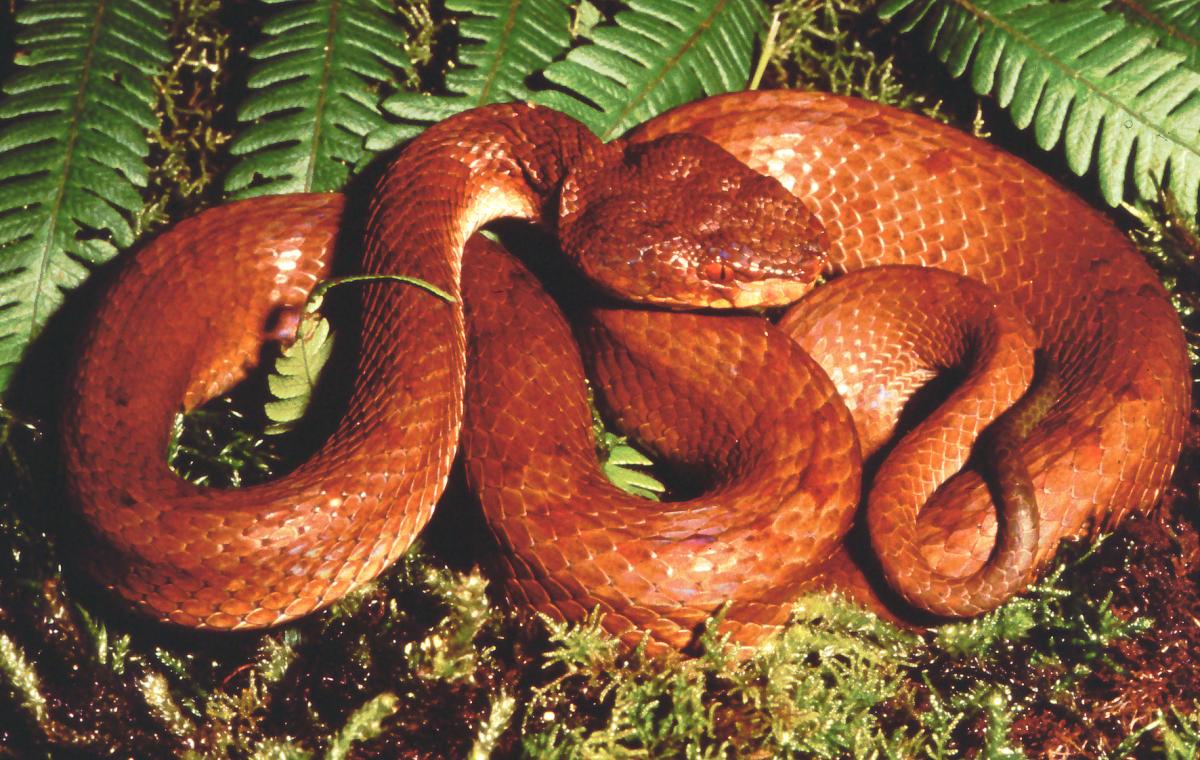Venomous snakes are an occupational health risk for millions of farmers in Nepal. Today, doctors, diplomats and government officials in the capital of the Himalayan nation celebrated the release of 5000 copies of a new book on the country’s venomous snakes. The book, written by a team of biologists and physicians from Germany, Nepal and Switzerland, is the first to help identify the dangerous reptiles based on photographs and text in Nepali and English editions. It also contains country-specific information on snake bite first aid and treatment. By better educating Nepal’s farmers and health care professionals, the experts hope to prevent suffering and death from snake bites in the country.
The name Nepal immediately evokes images of the Himalayas, trekking and mountaineering. However, about half of the roughly 30 million people of Nepal live on a narrow stretch of fertile plains and low rolling hills along the country’s southern border with India. Here, they share the land with protected areas like Chitwan National Park, world famous for its tigers, rhinos and elephants – and with some of Asia’s most dangerous snakes: various species of krait, cobra und Russell’s viper.
While tourists hardly ever see such reptiles, the risk for the rural population of Nepal is considerable – not only in the hot and humid lowlands, but increasingly in the hills, too. Even Swiss Ambassador Thomas Gass once found a snake in the garden of his Kathmandu residence. “Many people in Nepal worship snakes and fear them at the same time” says Gass, also Director of the Swiss Agency for Development and Cooperation (SDC) in Nepal: „Actually snakes are really useful because they eat so many rats and mice. This way they help secure harvests and control rodent-borne diseases. On the other hand, snake bites are a painful reality in the lives of millions of farmers in Nepal and a big health problem.“ As the knowledge about snakes and snake bite in Nepal is far from satisfactory, the SDC sponsored the production of a new book on the topic, the first to identify the dangerous reptiles based on photographs and text in separate Nepali and English editions. The book was prepared by biologists and physicians from the Biodiversity and Climate Research Centre (BiK-F) in Frankfurt, Museum für Naturkunde in Berlin, Geneva University Hospitals, B.P. Koirala Institute of Health Sciences and Tribhuvan University in Nepal. Apart from the descriptions of venomous snakes –at least 18 species are known to occur in the country– it also contains country-specific information on snake bite first aid and treatment. First issued in 5000 copies, it is now meant to better educate Nepal’s farmers and health care professionals and to help prevent disability and death from snake bite.<br />In the course of writing, the team of authors around Dr. Ulrich Kuch of the Biodiversity and Climate Research Centre (BiK-F) and Prof. Sanjib K. Sharma of the B.P. Koirala Institute of Health Sciences faced not only scientific, but also linguistic challenges: „At first we thought that concentrating the information on few pages would be the greatest hurdle,“ says Kuch who heads the ‚Emerging and Neglected Tropical Diseases Unit‘ of BiK-F. „But it turned out that translating it into our national language Nepali was the most difficult step,“ adds Sharma: „As we wanted to reach out to a very diverse audience in rural Nepal, from village schools to medical doctors, dealing with the technical text in Nepali gave us some tough nuts to crack.“
Assessing the current knowledge also pointed the team to where additional study is needed most – in the fields of medicine as well as biodiversity research: “Astonishing for me as a clinician was the fact that for some of the dangerous species in Nepal there isn’t even a photo of a live snake, let alone information about their venoms and how they might be neutralized by antivenoms,” says Prof. François Chappuis from the Department of International and Humanitarian Medicine of Geneva University Hospitals and one of the authors of the book.
At the book launching ceremony in Kathmandu, Nepal’s Health Secretary Dr. Prabin Mishra commended the successful long-term collaboration of the Nepalese, German and Swiss researchers and institutions. He announced that the book would be widely distributed to primary health care centres, hospitals and schools in the country in the context of awareness and training campaigns.
download to the book here:http://www.bik-f.de/root/index.php?page_id=77&projectID=55>
http://download.naturkundemuseum-berlin.de/presse/Nepalgiftschlange
Copyright: Museum für Naturkunde Berlin (Fotos: Frank Tillack).
